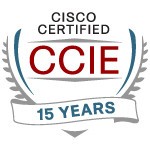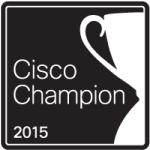 For Thursday’s Network Field Day 9 (#NFD9) line-up, we delegates are looking forward to hearing in person from NetBeez, SolarWinds, NEC, and CloudGenix. You the reader are, I hope, ready for another round of live streaming video from Silicon Valley, and planning to watch. In addition, the delegates will likely all be Tweeting with occasional snark. The streaming video links will be posted on the Network Field Day 9 web page.
For Thursday’s Network Field Day 9 (#NFD9) line-up, we delegates are looking forward to hearing in person from NetBeez, SolarWinds, NEC, and CloudGenix. You the reader are, I hope, ready for another round of live streaming video from Silicon Valley, and planning to watch. In addition, the delegates will likely all be Tweeting with occasional snark. The streaming video links will be posted on the Network Field Day 9 web page.
As noted previously, please tweet me or any of the delegates with any questions you’d like us to ask the vendors.
Thursday’s Schedule
Times are PST.
| Pacific Time | Presenter |
| 8:00 | NetBeez |
| 10:30 | SolarWinds |
| 13:30 | NEC |
| 16:00 | CloudGenix |
NetBeez, SolarWinds: Product Category = Network Management (“NG-NM”)
Vendor websites:
NetBeez: Is it Next-Gen Network Management?
SolarWInds: The Swiss-Army Knife of Network Management?
Here are some thoughts relating to these two vendors – SolarWinds first, then we’ll get around to NetBeez.
Concerning SolarWinds, they’ve been a consistent sponsor and candid presenter at previous Tech Field Day events. My guess is they’ll be telling us about the latest new functionality or components they’ve added to their product suite. My description of SolarWinds would be as a fairly affordable set of products that span network, servers, and hypervisors. There is some trade-off of your time for the price, but I hasten to add that many very expensive network management products can also take a lot of care and feeding.
I’d classify SolarWinds as providing a fairly good set of information about what the state of your network devices, servers, etc. is. (Hey, I’m from New England, I don’t do wild enthusiasm…). Automatic configuration collection from network devices, check. CPU, memory, and managed link information, check. Some performance stats.
In general, (and not just concerning SolarWinds), I’d like to see network management products become a lot easier to use and lower maintenance. Right now, most tools are focused on collecting and displaying data that’s available by SNMP, which isn’t really the same thing. I think of that as GUI-driven show commands. That’s somewhat useful.
I’d like to see more facilitated troubleshooting in general. I see people doing traceroute from A to B, and B to A, printing them, then using their net management tools or the CLI to observe things about the devices along the path. And writing info down, sometimes on a Visio diagram they printed out. Is it just me, or does that strike you as somewhat inefficient?
A New Paradigm?
NetBrain apparently lets you use its map to display the traceroute path(s), and show key information for each hop along the path. That’s an interesting paradigm, and I can imagine it speeding up troubleshooting. Coding that would seem to not involve complex programming, given mapping capability (which is harder, and most tools lack).
Here’s why I think this way… Lately, I’ve been involved in several situations where the problem is a variation on determining which of many hops in a path is dropping packets. If the problem is oversubscription or congestion, checking the interfaces along the path would resolve the problem. If the problem is a WLAN controller with problems sending some tunneled guest WLAN traffic to an anchor controller, or an over-taxed WebSense or other security box that doesn’t report useful SNMP statistics, or is otherwise “invisible,” it’s a lot harder tracking down where the packet loss is occurring.
That’s where NetBeez and similar products intrigue me. If the cost of an appliance and cloud management drops sufficiently, we might scatter probes not just one per WAN site but at various hops along the path. And differing web-fetch or speed test results might then help us localize obscure packet loss problems. Preferably combined with a map of some kind.
There already is a technology like that, Cisco IP SLA. Built into IOS. The apparent challenge of IP SLA is cost of tools to provision and report on it: useful technology, but the good tools are darn pricey. I want bulk provisioning and a lot of functionality, which the less costly tools apparently don’t provide. I say apparently because I occasionally get to work with various network management products, but there’s no way I or anyone could be current on what every product costs and does.
What’s different about NetBeez, and arguably ThousandEyes and Appneta, is that they measure several things, including user web experience. AppNeta also can measure using synthetic voice and video. ThousandEyes presented to a prior Tech Field Day, one I didn’t attend. I’m mixed about a VM-based delivery model: most sites are trying to get away from server / hypervisor hardware at remote sites. I think I like the small monitoring appliance approach better (NetBeez, Appneta), but could perhaps be convinced otherwise. Travel to deploy appliances could be a nuisance. On the other hand, remote hands could probably plug them in – there’s no local configuration needed. Cloud management wins!
So with NetBeez, it’s interesting to see a newcomer. Right now they do the basics, who knows what they’ll add for functionality. Competition spurring innovation?
NEC: Product Category = Switching Control/OpenFlow
Vendor website: NEC
My impression is that NEC is using OpenFlow support as a market differentiator, as is HP for that matter. I’m mixed concerning OpenFlow. I view it as an interesting first attempt at SDN. I’m trying to learn more about OpenFlow’s capabilities and futures. I share Ivan Pepelnjak’s concerns about scaling (and thanks to him for quantifying it better and in more detail than I was equipped to do). Things are changing. Flaws in version N get fixed in version N+1 (see Ivan’s recent blog about BigSwitch). So it’ll be interesting to see how NEC OpenFlow is evolving too!
For my list of questions for Switching Control and OpenFlow products, see my previous blog about Wednesday’s NFD9 sessions.
CloudGenix: Product Category=SD-WAN
Vendor website: CloudGenix
From their home page: “CloudGenix virtualizes WANs and securely connects users and hybrid applications, while radically reducing remote office infrastructure.”
For my list of SD-WAN questions, see my previous blog about Wednesday’s NFD9 sessions.
Comments
Comments are welcome, both in agreement or informative disagreement with the above, and especially good questions to ask the NFD9 vendors! Thanks in advance!
Hashtags: #NFD9 #VeloCloud #CumulusNetworks #PluribusNetworks #SD-WAN #OpenStack
Twitter: @pjwelcher


